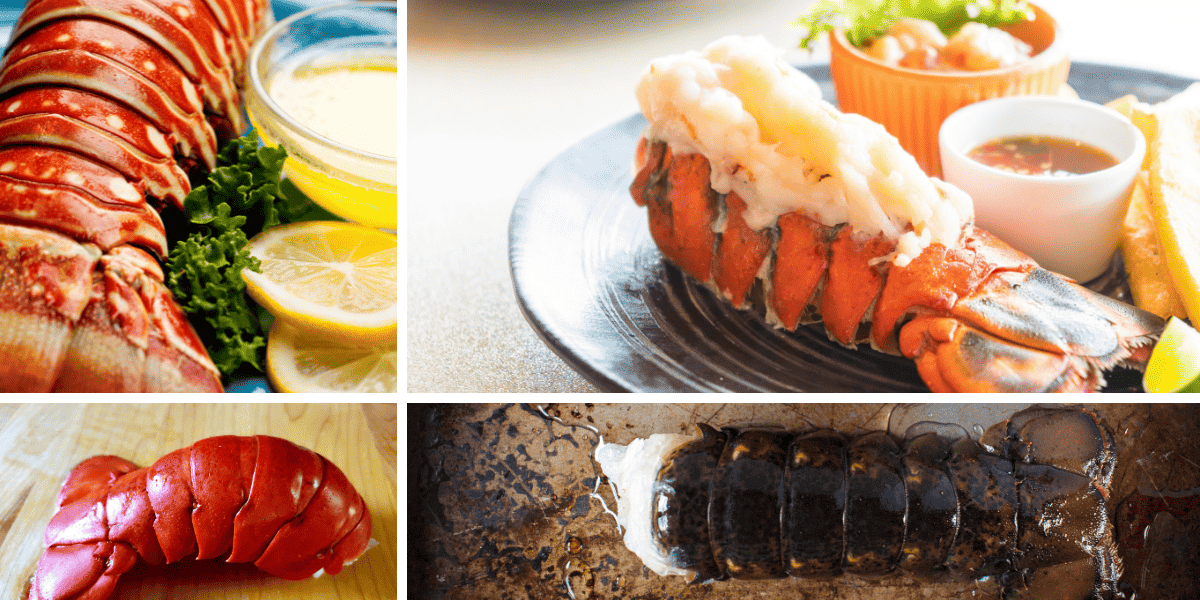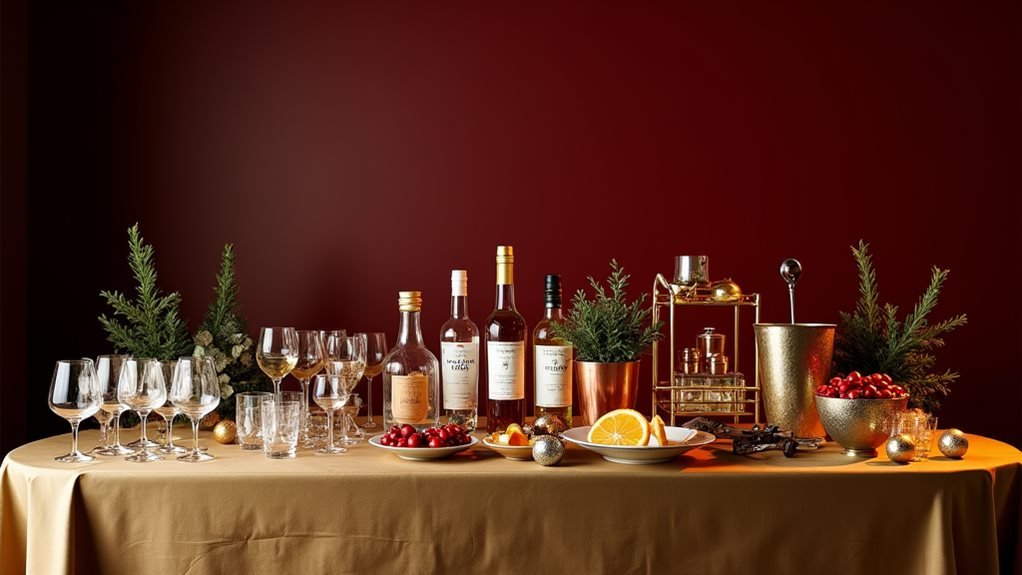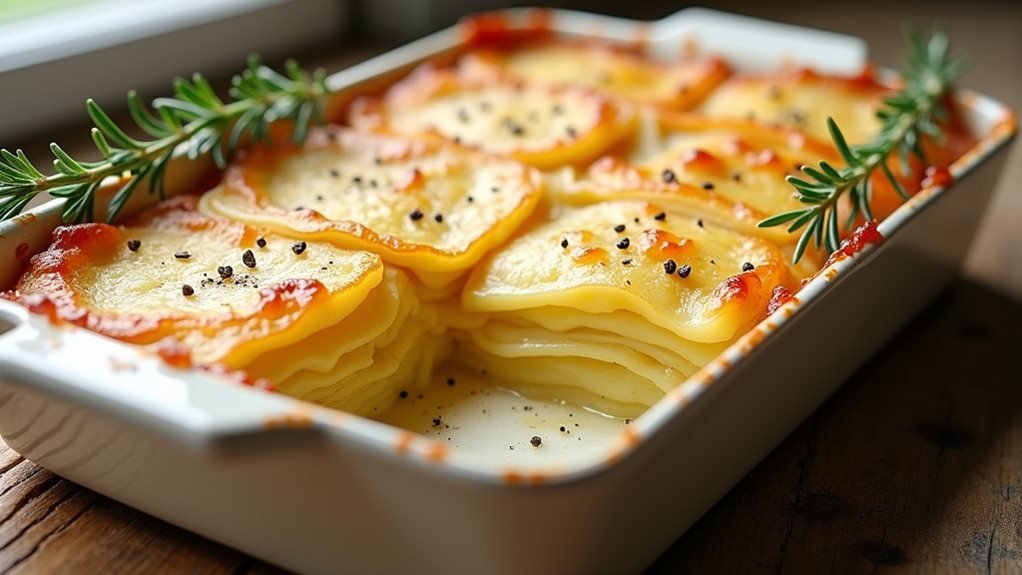Cooking lobster tail at home doesn’t need to be intimidating. With a few reliable methods and the right tools, you can turn this premium seafood into a tender, flavorful dish worthy of a restaurant plate. Cooking techniques such as boiling, steaming, baking, broiling, grilling, and even sous vide all work well — the key is to control time and temperature.
Introduction to Lobster Tail
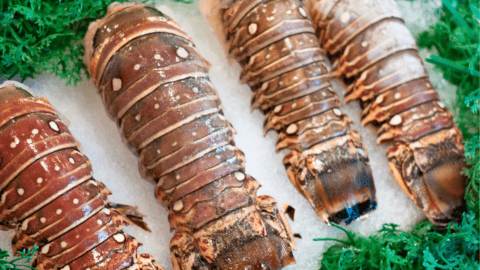
The tail is prized for its sweet, firm meat and elegant appearance on the plate. Cold-water lobster tails are often favored for flavor and texture, while warm-water tails are more common in markets. Choosing well sets you up for tender results.
How We Tested
We cooked multiple 5–6 oz lobster tails using each method on the same day to maintain consistency in variables. Tails were thawed overnight in the refrigerator, then butterflied with kitchen shears. We seasoned lightly with salt and brushed with plain melted butter unless otherwise noted. Texture, flavor, moisture, and appearance were scored after a 2–3 minute rest. Doneness was verified with an instant-read thermometer at the thickest point.
Key findings: Broiling produced the best surface browning and “steakhouse” look. Steaming yielded the most consistently tender results, with a clean lobster flavor. Baking delivers even cooking and easy batching for guests. Boiling was fast, but it did not require heavy seasoning afterward. Grilling added smoky notes but required close monitoring to avoid dryness.
5 Ways to Cook Lobster Tail
Choose the approach that matches your goal — speed, tenderness, browning, or smoke. Always check the temperature: the USDA thermometer guide recommends a safe endpoint of 145°F. For ideal texture, remove the tails at 135–140°F and let carryover finish the job. Community feedback from Reddit’s seafood forum consistently favors steaming as a good option for beginners.
Boiling
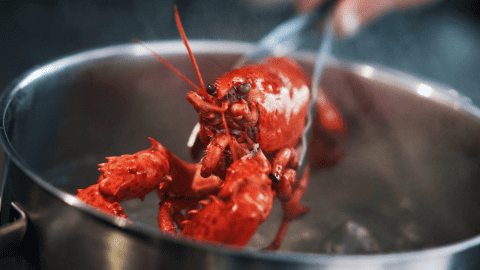
Why use it: Fast and simple. Best when paired with a bold sauce (such as garlic butter, lemon, or herbs).
Ingredients (2 tails): 2 lobster tails (5–6 oz each), 2 tbsp butter, 1 tsp salt, lemon wedges.
- Bring a large pot of well-salted water to a rolling boil (about 1 tbsp salt per quart).
- Add tails; simmer gently for about 1 minute per ounce (5–6 minutes for 5–6 ounces).
- Remove when the shells are bright red and the flesh has turned opaque. Target 135–140°F.
- Rest 2 minutes; serve with melted butter and lemon.
Steaming
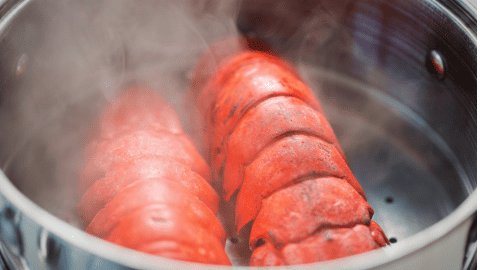
Why use it: Clean flavor and tender texture with forgiving timing — a great pick for first-timers.
Ingredients (2 tails): 2 lobster tails (5–6 oz each), 2 tbsp butter, 1 tsp salt, lemon wedges.
- Add 2 inches of water to a pot, season with salt, and bring to a boil.
- Set a steamer rack above the water. Place tails on rack; cover tightly.
- Steam about 1 minute per ounce (5–6 minutes for 5–6 oz).
- Check the thickest spot: pull at 135–140°F. Rest briefly and serve with butter and lemon, if desired.
Baking
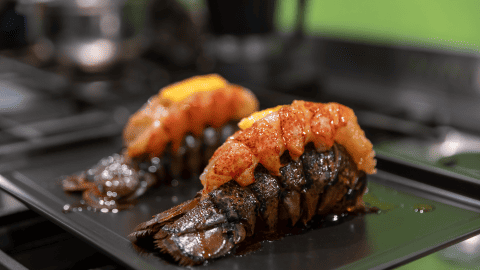
Why use it: Even heat and easy batching for guests. Aromatics infuse gently.
Ingredients (2 tails): 2 lobster tails (5–6 oz each), 2 tablespoons melted butter, 1 small garlic clove (minced), a pinch of paprika or Old Bay, and salt.
- Heat oven to 425°F. Line a sheet pan.
- Butterfly the shell; lift the meat slightly to rest it on top for presentation.
- Brush with butter and garlic; season with salt and a light dusting of paprika or Old Bay.
- Bake 10–12 minutes for 5–6 oz tails, or until the center reads 135–140°F.
Broiling
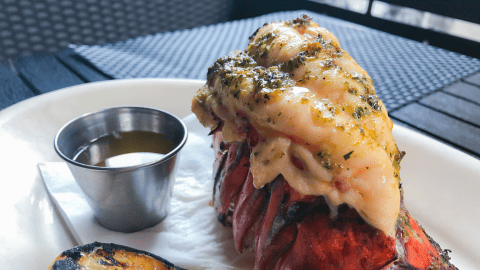
Why use it: Maximum surface browning and a restaurant-style look — but timing is tight.
Ingredients (2 tails): 2 lobster tails (5–6 oz each), 2 tbsp melted butter, 1 tsp lemon juice, pinch paprika, salt.
- Set an oven rack in the top position and preheat the broiler to its highest setting.
- Butterfly and pull the meat slightly above the shell. Brush with butter and lemon; season to taste.
- Broil on the top rack for 5–7 minutes, rotating the pan once to ensure even color.
- Remove when the surface is lightly browned and the center hits 135–140°F. Rest 2 minutes.
Grilling
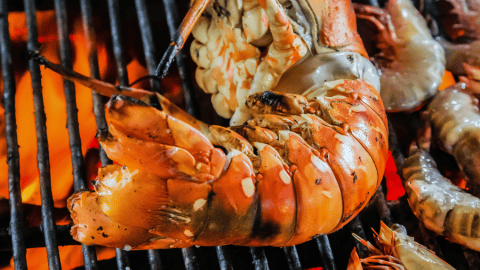
Why use it: Adds smoke and char. Best for outdoor cooking and surf-and-turf plates.
Ingredients (2 tails): 2 lobster tails (5–6 oz each), 1 tbsp olive oil or butter, salt, lemon wedges.
- Heat grill to medium-high. Oil grates lightly.
- Split or butterfly tails; brush with oil or butter and season with salt.
- Grill cut-side down 4–5 minutes; flip and grill 3–4 minutes more.
- Remove at 135–140°F. Rest briefly and serve with lemon.
Sous Vide (Optional)
Why use it: Precision texture; finish under the broiler for color.
Ingredients (2 tails): 2 lobster tails (5–6 oz each), 2 tbsp butter, pinch salt.
- Set circulator to 130°F. Butterfly tails and place in a bag with butter and a pinch of salt.
- Cook 20–25 minutes; remove and pat dry.
- Broil briefly (1–2 minutes) to add color without overshooting 140°F.
Preparation
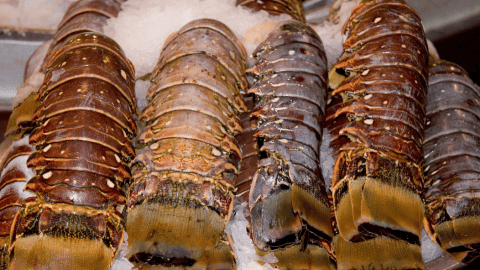
Thaw overnight in the refrigerator or under cold running water — not on the counter. Rinse, pat dry, and butterfly with kitchen shears (top-shell snip). For knife work and shell handling, see Gordon Ramsay lobster prep.
Food Safety Guidelines
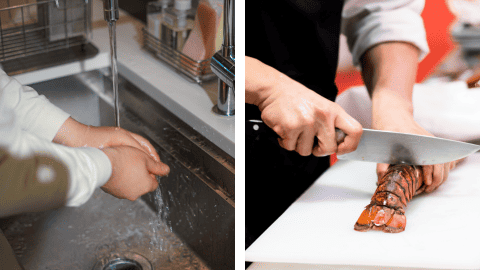
- Thaw in the refrigerator; avoid thawing at room temperature.
- Wash your hands and tools after handling raw seafood.
- Use separate boards for raw and cooked foods.
- USDA endpoint is 145°F. For the best texture, remove tails at 135–140°F and rest for a brief period. Refer to the USDA safe handling guidelines and the USDA thermometer guide for guidance.
- Refrigerate leftovers within two hours. Use them within 2–3 days or freeze for up to three months.
- Reheat leftovers to 165°F.
- Clean all work surfaces with hot, soapy water.
In-Shell Presentation and Appearance
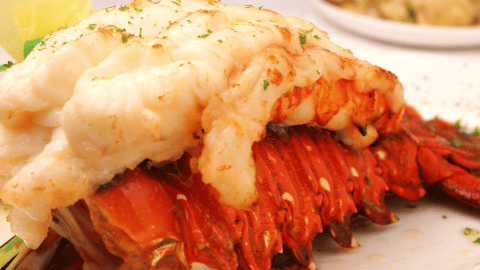
Properly cooked tails show an even, opaque interior with firm, juicy meat and a golden surface if broiled or grilled. Finish with lemon wedges, drawn butter, herbs, or a drizzle of garlic butter.
Serving Suggestions
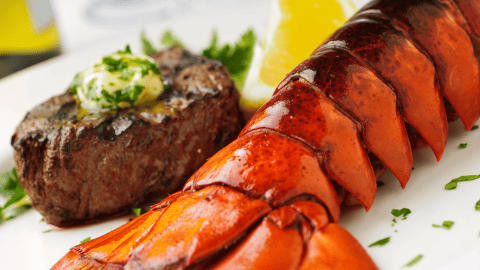
Pair with roasted potatoes, asparagus, or wild rice. Classic sauces include drawn butter, lemon-garlic butter, or miso butter. For ideas, see lobster risotto and lobster spaghetti. Drinks that match well include Chardonnay, Sauvignon Blanc, Champagne, or a light pilsner.
Equipment Needed
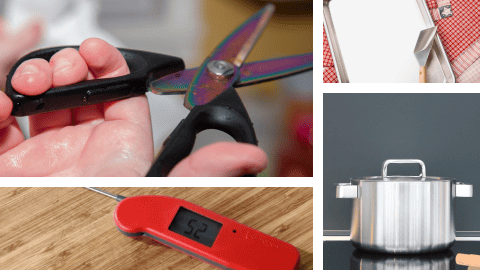
Kitchen shears for butterflying, an instant-read thermometer for accuracy, plus a pot or steamer basket, a baking sheet, or a grill, depending on your method. The right tools help avoid overcooking.
Storing Leftover Cooked Lobster Tail Safely
Wrap tightly and refrigerate within two hours. Use within 2–3 days, or freeze up to three months. Reheat to 165°F.
How to Cook Lobster Tail FAQs
What is the best way to cook lobster tail?
Steaming is dependable for tenderness; broiling or grilling adds deeper flavor.
What is the correct internal temperature?
Remove tails at 135–140°F and rest; the USDA endpoint is 145°F.
How much lobster tail per person?
Plan on 3–10 ounces per serving, depending on the menu.
What goes well with lobster tail?
Potatoes, rice, grilled vegetables, lemon butter — with wine like Chardonnay or Champagne, or a light pilsner.
